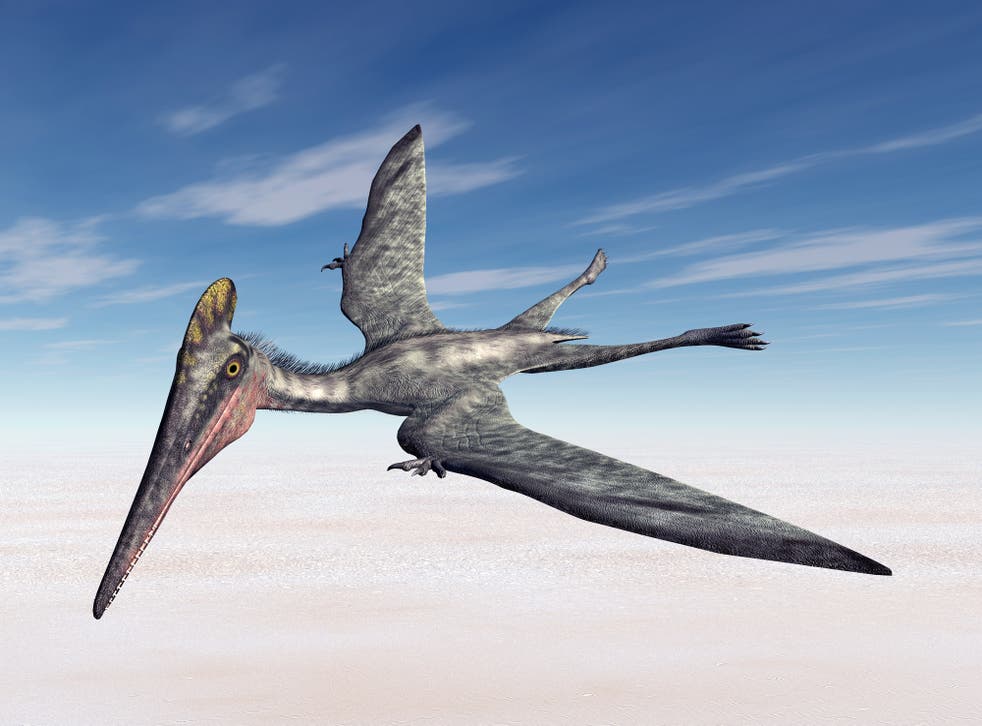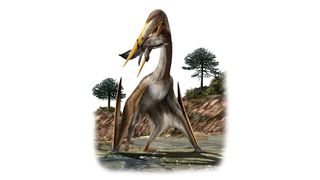Bizarre neck bones helped pterosaurs support their giraffe-size necks and huge heads, new study finds.
“It is unlike anything seen previously in a vertebra of any animal.”
The following written content by Laura Geggel

During the dinosaur age, azhdarchid pterosaurs — soaring reptiles that could grow as large as airplanes — supported their absurdly long necks and large heads during flight thanks to a never-before-seen internal bone structure in their neck vertebrae, a new study finds.
This unique structure, which looks like the spokes on a bicycle wheel, allowed the largest pterosaurs such as Quetzalcoatlus northropi, which had a wingspan of more than 30 feet (10 meters), to fly with necks that were longer than a giraffe’s neck, the researchers found.
“One of our most important findings is the arrangement of cross-struts within the vertebral centrum [the inner wall of the vertebrae],” study co-researcher Dave Martill, a professor of paleobiology of the University of Portsmouth in the United Kingdom, said in a statement. “It is unlike anything seen previously in a vertebra of any animal.”

The team found that in pterosaurs in the family Azhdarchidae, these rod-like structures connected the interior walls of the largely hollow neck vertebrae. These slender rods had an average diameter of 0.04 inches (1.16 millimeters), and they were “helically arranged along the length of the vertebra,” Martill said. “Evolution shaped these creatures into awesome, breathtakingly efficient flyers.”
Evolution shaped these creatures into awesome, breathtakingly efficient flyers.Dave Martill, professor of paleobiology

Pterosaurs aren’t dinosaurs, but lived alongside them after emerging during the late Triassic period, about 225 million years ago, until they vanished from the fossil record at the end of the Cretaceous period, about 65.5 million years ago.
Until now, researchers suspected that a pterosaur’s neck bones had only a simple tube-within-a-tube structure, Martill said. But this proposed structure likely wouldn’t have provided the long neck enough support for the pterosaur’s head — which could be longer than 5 feet (1.5 m) — especially when it grabbed and carried heavy prey through the air while hunting. Read more from Live Science.





